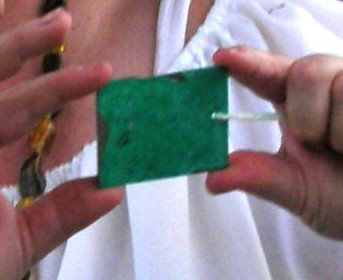I found this advertisement from 2003, and I would like to look into human urine and bamboo.
a village lost in the wilderness of the huge Tibetan plateau, nestled between cliffs and whipped all winter long by an icy wind, which hides a unique rare pearl: its printing house." Here the Tibetans print their sacred manuscripts, using traditional hand methods to carve the wood blocks, make the ink, and make the paper. In Chengdu the group visits the memorial to Hsieh-Tao, whom the Chinese describe as the first lady papermaker. During the great Tang Dynasty (8th cent.) she created fancy designs in notepapers (this was the beginning of watermarks in paper),on which she wrote love poems. For another amazing papermaking experience, we drive to Fuyang, the largest center of papermaking in China for both handmade paper and machine paper. Here we visit a village inhabited by Cai Lun's descendants,who make bamboo paper by hand. And we see the unusual method of using human urine in the processing of bamboo. In Anhui Province we see papermakers producing the famous "Xuan" paper, revered by Chinese painters and calligraphers. They believe the handmade paper of Anhui surpasses all others. For details, contact Elaine Koretsky at the Carriage House Paper Museum, 8 Evans Rd. Brookline MA 02445, USA; tel: 1(617)232-1636; email: click herehttp://www.paperhistory.org/arch_nws.htm
_______________
This is from an article on soil conditioning in the Ganges but I think I can use the information on an economic projection. It should tie in well with the theory on plague being worsened by weather and manure shortage issues. I have outputs for cattle and pigeons.
The daily per capita availability of night soil, human urine and nutrients contained in it is as under:
Particulars
Faeces (g)
Urine(s)
Quantity (natural condition)
133.00
1200.00
Quantity (dry)
30.30
64.00
Nitrogen
2.10
12.10
Phosphorus
1.64
1.80
Potassium
0.73
2.22
This data shows that night soil and human urine have a great manurial potential with regard to nitrogen, phosphorus and potassium. Due to this potential, it is considered good manure by the farmers.
http://www.fao.org/docrep/x5672e/x5672e03.htm
_________________________
Nevertheless, Egyptian toothpaste was more pleasant than that used by the ancient Romans. Roman toothpaste around 100 A.D. was made from human urine. Between brushings, urine was also used as a mouthwash. Roman physicians claimed that brushing with urine whitened teeth and fixed them more solidly in their sockets. Indeed, some urines were more highly prized than others. For example, Roman aristocrats paid dearly for urine imported from Portugal. Portuguese urine was reputedly both the strongest smelling and the best whitener.
Urine remained a common ingredient in toothpastes well into the 18th century. This was because early dentists knew that urine is a ready source of ammonia - one of the most effective natural cleaning and disinfecting agents. Even today, ammonia can often be found in modern dental pastes.
http://www.harpercollins.com.au/drstephenjuan/0507news.htm
______________________
HA!! Papermaking!!
nique Bamboo Paper
Donated by Elaine Koretsky
Shipping Weight: two pounds
Estimated Value: $100
Starting Bid: $35
Ten full-size sheets (12.5"x15.5") of paper featured in the Winter 2005 issue of Hand Papermaking. Produced in Cai Jia Wu, China, the bamboo for this paper is harvested, soaked, and cooked in the usual way, but the final stage of processing is unusual. The fiber is further softened in a pit containing five parts water and one part human urine. This paper is dyed yellow to simulate gold and used primarily for burning at religious ceremonies.
http://www.handpapermaking.org/auction/item05.htm
_____________________________
OHMIGAWD!!! I NEEDED A KID'S URINE!!!
| Brown inks : Bistre | |
| Old Master drawings are popularly identified with the handsome brown color of their ink. Formerly these sheets were commonly described with the misnomer "sepia". It is usual today to describe all such drawings as "pen and brown ink" or "brush and brown wash", because, although a number of different inks were used, it is difficult to distinguish between them. Of the two primary kinds of ink, bistre presents more or less the original appearance at the time of use, and iron-gall ink turns from black to brown with time. Bistre was made from chimney soot dissolved in wine, water, or a child's urine. A binder was not necessary. The color of bistre varies with the wood from which the soot was derived, but in general it has a warm, transparent brown tone. |
http://www.nyu.edu/classes/miller/guide/bistre.html
____________________
Again, urine is not the first choice...
XX. For the vermilion.
Vermilion becomes very fine in aquavitae, or in child's urine. But it will be still finer, if you put in aquavitae with a little saffron. It is used with whipped whites of eggs.
http://old-crafts.com/colors_and_painting/compositions_for_limners.htm




















